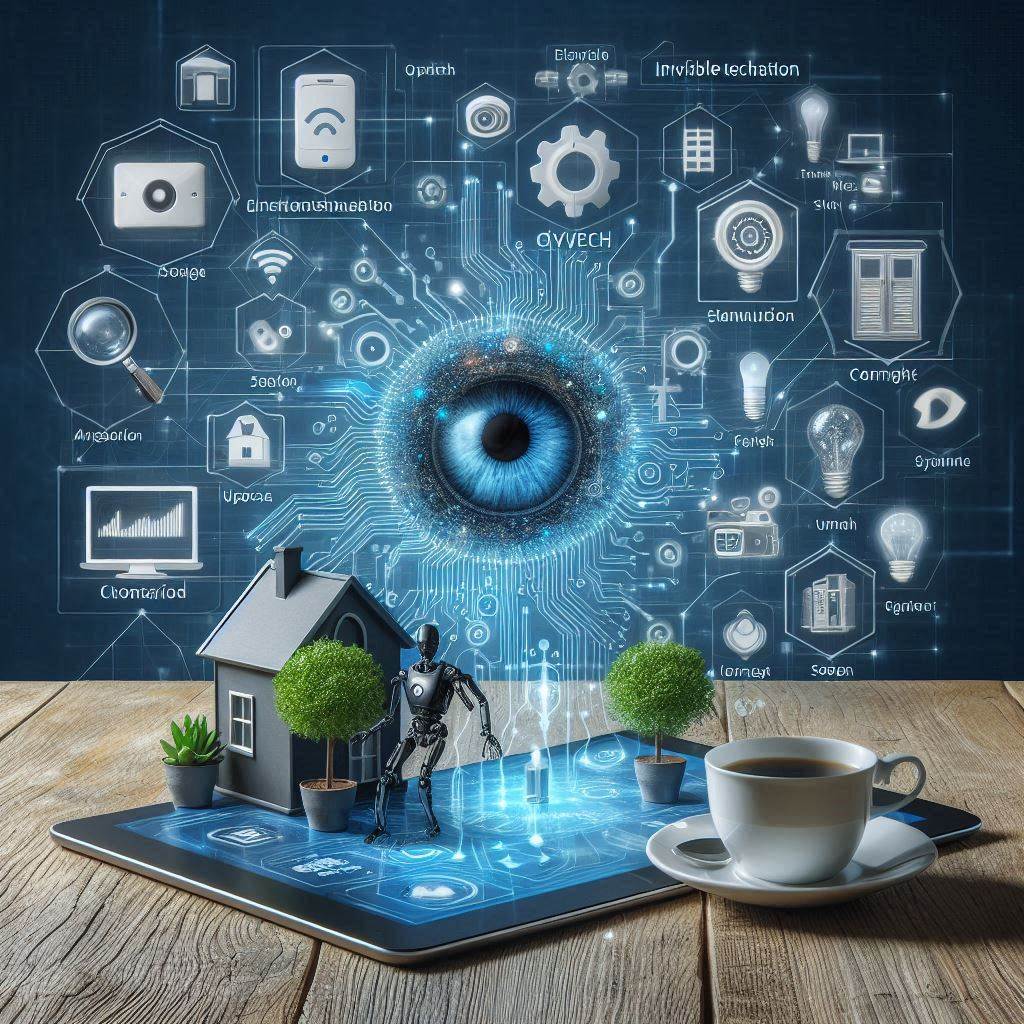In the modern age of interior design and advanced technology, homeowners crave both beauty and brains in their living spaces. This desire has given rise to invisible tech integration, where technology blends seamlessly into home décor, operating quietly in the background. From hidden speakers to motion sensors tucked inside walls, invisible tech brings elegance and intelligence together. However, just like a magician hiding his tricks, making technology invisible comes with its own set of challenges. Let’s explore 10 such challenges and their simple, relatable solutions—aimed at creating the best smart home system.

1. Device Placement
Tashbih (Analogy): Like hiding a light switch behind a curtain—beautiful, but impractical.
Invisible devices often get installed in hard-to-reach places, which can affect their performance.
Solution:
Design spaces with accessibility in mind. Use discreet access panels or wireless connections so that devices can be reached without ruining the aesthetic.
2. Signal Obstruction
Tashbih: Like whispering behind a wall—nobody hears you.
Smart devices need signals (Wi-Fi, Bluetooth), and hiding them can weaken these connections.
Solution:
Use mesh Wi-Fi systems and signal boosters. The best smart home system ensures strong and uninterrupted connectivity throughout the home, even with hidden devices.
3. Heat Management
Tashbih: Like wrapping a laptop in a blanket—it overheats.
Hidden tech can trap heat if ventilation isn’t considered.
Solution:
Install passive cooling systems or leave small ventilation gaps. It keeps devices cool without compromising invisibility.
4. Maintenance Difficulty
Tashbih: Like hiding your car engine under the trunk—it looks clean, but servicing is a nightmare.
When tech is built into walls or ceilings, repairs can become expensive and complicated.
Solution:
Use modular designs where components can be removed easily. Hidden doesn’t have to mean permanently buried.
5. High Installation Cost
Tashbih: Like custom-tailoring a tuxedo—it fits perfectly, but it’s pricey.
Seamless tech needs custom installation, which can be costly.
Solution:
Opt for scalable installations. Start with essential areas like living rooms and expand over time. The best smart home system allows gradual upgrades without breaking the bank.
6. Lack of Physical Feedback
Tashbih: Like pressing an invisible elevator button—you’re never sure it worked.
Without visible buttons or screens, users might feel unsure whether commands have been registered.
Solution:
Integrate subtle cues like soft lights, sounds, or haptic responses to confirm actions invisibly but clearly.
7. Compatibility Issues
Tashbih: Like hiding puzzle pieces that don’t even fit together.
Mixing different brands in a hidden setup can lead to problems.
Solution:
Choose devices that follow universal protocols like Matter or Zigbee. The best smart home system prioritizes compatibility for smooth performance.
8. User Learning Curve
Tashbih: Like using invisible ink—you need to learn how to read it.
Invisible controls can confuse guests and even residents.
Solution:
Include voice control and intuitive mobile apps that offer simple guidance. Technology should feel like second nature.
9. Style Over Function
Tashbih: Like choosing shoes that look good but don’t fit.
Focusing too much on aesthetics can reduce the functionality of tech.
Solution:
Work with both interior designers and smart tech experts. A balance of form and function is key to the best smart home system.
10. Security Concerns
Tashbih: Like hiding your locks but leaving the door open.
Invisible devices may go unnoticed during routine checks, leaving security gaps.
Solution:
Add scheduled diagnostic scans and security alerts to keep everything in check, even when it’s out of sight.
Invisible tech integration isn’t just about hiding wires—it’s about merging beauty with brains. As we move toward cleaner, more minimal homes, the need for smart technology that doesn’t ruin the look is stronger than ever. But invisibility should never come at the cost of performance or usability.

To truly achieve the best smart home system, homeowners must approach invisible tech with a balanced mindset—combining elegant design, reliable function, and user-friendly controls. When done right, technology will serve quietly in the background, like a loyal assistant, enhancing life without ever taking the spotlight.




